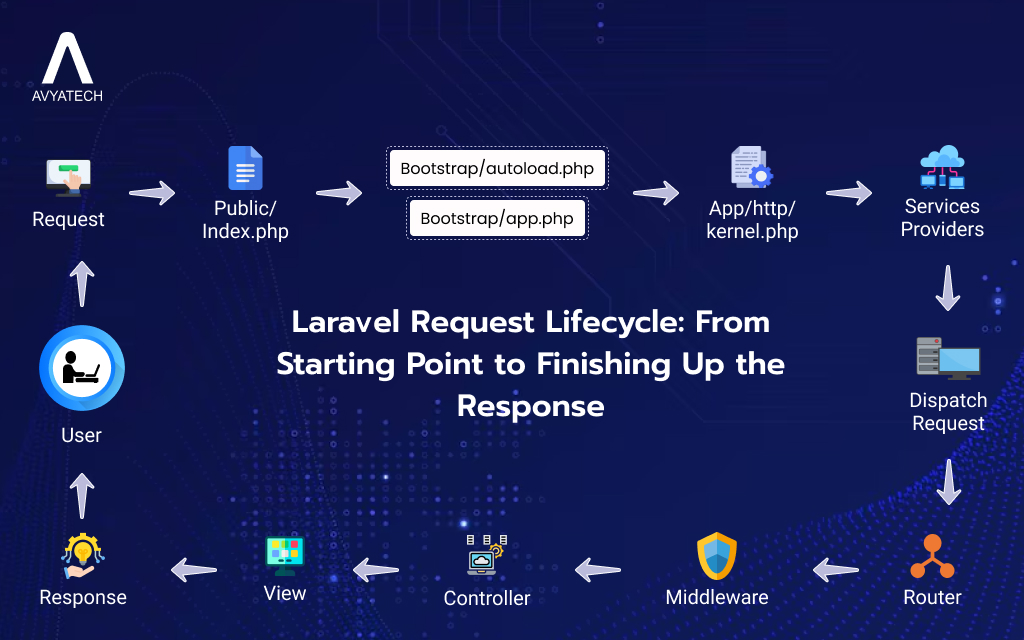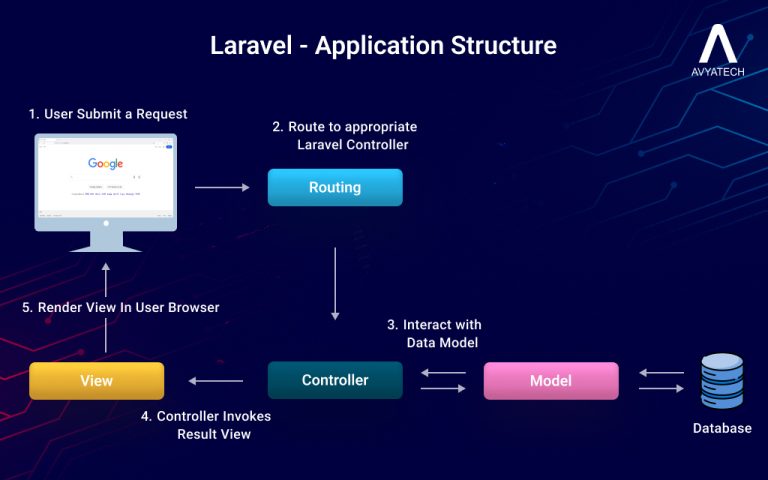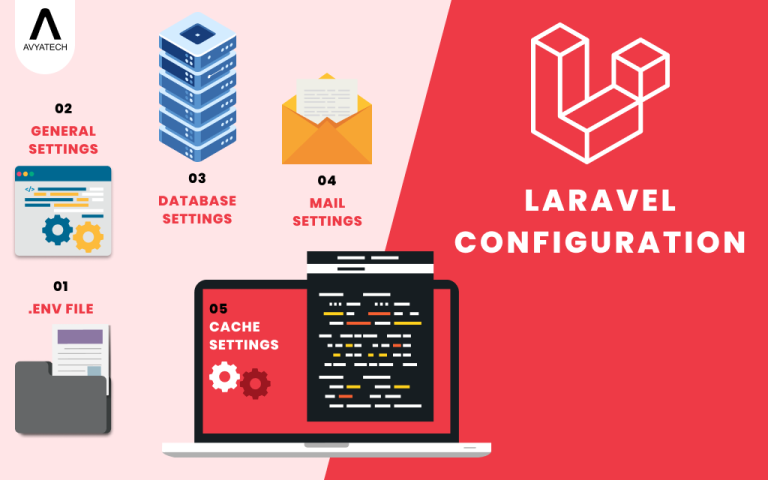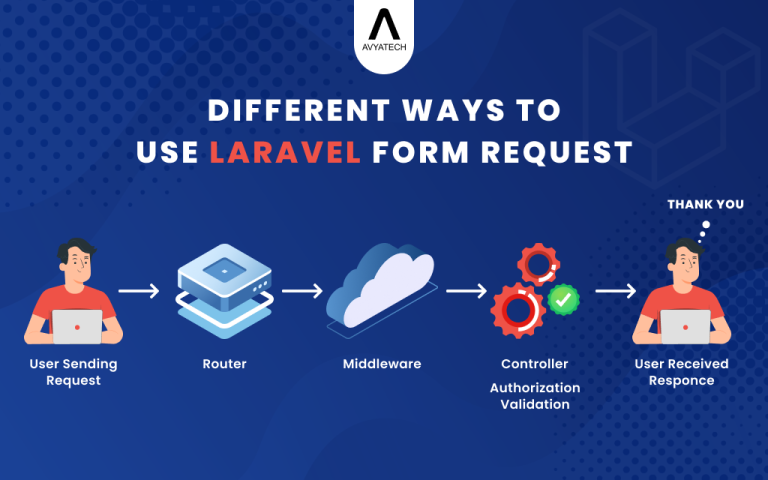Developers working on Laravel projects must recognize the Laravel request/response lifecycle better. They should understand how the Laravel framework works during each phase of its lifecycle. Some prime phases of the Laravel request/response lifecycle include the Laravel application entry point, HTTP/Console Kernel, HTTP kernel, Service Provider, Router, and finishing up the Response. Laravel takes care of all the behind-the-scenes actions so that when you browse, things work smoothly. The flow of the HTTP request lifecycle in the Laravel framework goes this way:
- The request is redirected to the entry point.
- The Laravel app is instantiated.
- All critical elements get started.
- Service providers are registered and booted.
- The request reaches the routing system.
- The request is sent to a route or controller.
- The response is generated and sent back to the entry point.
A Quick Look at Laravel Request Lifecycle
Laravel is highly beneficial for application developers and enterprise growth. It offers the benefits of an accelerated development process, active community support, artisan command-line automation, a blade templating engine for UI design, an eloquent ORM for database interaction, encouragement for unit testing, robust security measures, and scalability options. Laravel stuns with its scalability and versatility features. Let’s understand the Laravel request lifecycle in simple and plain words through the following step-by-step breakdown:
The user makes a request (visitor arrives)
Imagine someone opens a website, like clicking on a blog post or submitting a form. This action sends a request to the server (where the website lives).
The web server receives the request (gatekeeper)
The web server (like Apache or Nginx) checks the request first. Think of it as the gatekeeper, ensuring the request is genuine. It then passes the request to Laravel to handle the rest.
Routing (deciding where to go)
Laravel takes the request and checks its routes (a kind of map). This is like a receptionist asking, “What page or action are you looking for?” If you’re trying to visit a blog post, the routing directs the request to the right part of the website that handles blog posts.
Middleware (security check or filter)
Your request goes through middleware before connecting to its final destination. It is like security guards are checking IDs. For example, when a visitor tries to reach a member-only page, security checks and filters confirm whether you are logged in.
Controller handles the request (processing the request)
After the security checks, the request is sent to a controller. Think of the controller as a manager that knows how to handle a specific request. If you’re reading a blog post, the controller finds the post in the database and sends it back.
The response is sent back (giving the visitor what they came for)
After the controller processes everything, Laravel creates a response. It’s like the manager finding the right document (like the blog post you requested) and handing it back to the visitor.
View (the final display)
Finally, Laravel decides how to present the information. This is where it loads a view (like a template). Think of the view as the website design/layout that shows the content. So, the blog post isn’t just plain text, but nicely formatted with images, links, etc.
The user sees the response
Now, the web browser shows the requested page or information back to the visitor.
Laravel Request/Response Lifecycle Example
For example, you are visiting a blog. Here’s how Laravel would handle it:
- You open myblog.com/first-post.
- The server checks this request and forwards it to Laravel.
- Laravel sees the route /first-post and sends it to the right controller (say, PostController).
- Middleware checks if you need to be logged in (if required).
- The controller gets the content for first-post from the database.
- Laravel wraps this data in a view (using an HTML template) and sends it back to the browser.
And that’s it!
Request Lifecycle Hooks
Request lifecycle hooks are the unique points in the web request lifecycle. These points allow developers to insert custom codes so that they can change the request or response. In the process of web development using the Laravel framework, hooks are a fundamental perception and vital part of the VILT stack.
The request lifecycle in this framework initiates at the time when users send a request to the app. The request also ends when a response is sent back by the app. Laravel is capable of offering multiple lifecycle hooks in between the starting and ending points. These points are equally useful for adding codes. These unique hook points cover
Middleware
Middleware is a lifecycle hook that enables developers to sieve HTTP requests, inflowing into the application. It validates app user authentication. It redirects users to the login screen when they are not authenticated. Users can also create their own middleware.
Request and response events
Request and response events is another Laravel lifecycle hook that matters the most during the request lifecycle in case of request handling. In addition, developers can execute their own codes and listen to events.
Service providers
This lifecycle hook is vital because the Laravel framework’s core services are bootstrapped through service providers.
When developers better comprehend and utilize advanced lifecycle hooks, they significantly improve web app functionality and efficiency. These hooks also come with superb features and ensure efficient request handling. Moreover, these hooks play a vital role in enhancing the user experience.
Summing Up
This is how the Laravel framework works and processes requests to get responses. In a Laravel request/response lifecycle, the things that matter the most are the entry point, kernel, service provider, router, and response.







